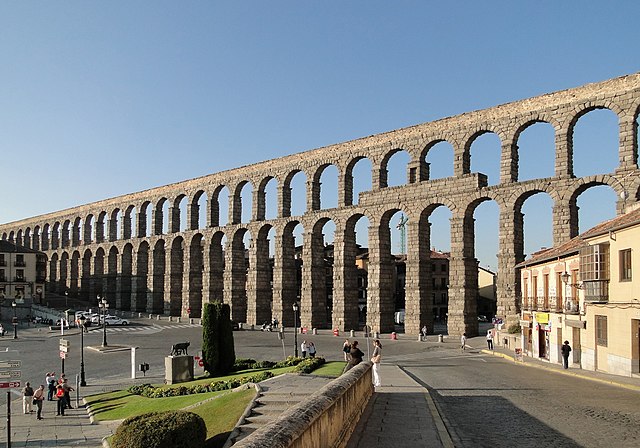A viaduct is a specific type of bridge that consists of a series of arches, piers or columns supporting a long elevated railway or road. Typically a viaduct connects two points of roughly equal elevation, allowing direct overpass across a wide valley, road, river, or other low-lying terrain features and obstacles. The term viaduct is derived from the Latin via meaning "road", and ducere meaning "to lead". It is a 19th-century derivation from an analogy with ancient Roman aqueducts. Like the Roman aqueducts, many early viaducts comprised a series of arches of roughly equal length.
The 1812 Laigh Milton Viaduct in Ayrshire – the oldest surviving railway bridge in Scotland
The Ouse Valley Viaduct in Sussex, England
The Millau Viaduct
"Deansgate Locks" bars under Deansgate Metrolink station in Manchester.
Aqueducts are bridges constructed to convey watercourses across gaps such as valleys or ravines. The term aqueduct may also be used to refer to the entire watercourse, as well as the bridge. Large navigable aqueducts are used as transport links for boats or ships. Aqueducts must span a crossing at the same level as the watercourses on each end. The word is derived from the Latin aqua ("water") and ducere, therefore meaning "to lead water". A modern version of an aqueduct is a pipeline bridge. They may take the form of tunnels, networks of surface channels and canals, covered clay pipes or monumental bridges.
Pont du Gard, France, a Roman aqueduct built circa 40–60 CE. It is one of France's top tourist attractions and a World Heritage Site.
Mathur Aqueduct, India, built in 1966
Aqueduct of Vanvitelli, Italy, built by Luigi Vanvitelli. It is a World Heritage Site.
Aqueduct of Segovia








